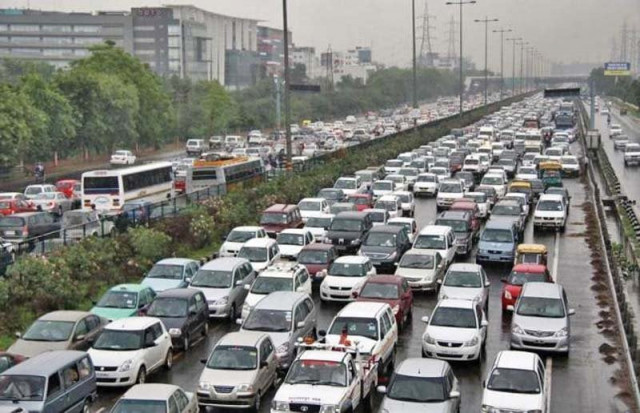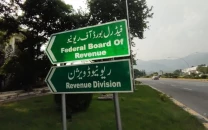Greenhouse gases: Curbing emissions not a trivial task
India will be looking to earn billions for promoting the green agenda

Delhi government has announced that from January 1, 2016 onwards, private vehicles would be restricted on alternate days. PHOTO: FILE
In the absence of a holistic policy roadmap, this is by no means a trivial task, albeit not an impossible one.
When is good news bad?
Good news is that Asia’s industrial powerhouse India is all set to attempt the biggest policy experiment ever to control automobile emissions. Bad news is that no lessons were learnt from history.
Delhi government has announced that from January 1, 2016 onwards, private vehicles would be restricted on alternate days – depending on whether their licence plates end in even or odd numbers.
Indian policymakers cite the example of Beijing as a working model where this policy led to significant improvements in air quality ahead of the Olympics 2008.
However, the burning question is: Will the plan work out for Delhi?
Yes, but only for a short while. Later, a lot of people will buy a second car – many of which would be older and cheaper models with much higher greenhouse emissions.
The scheme would ultimately result in many more cars on roads of Delhi with no added incentive to use public transport. No sustained improvement in air quality would be made.
In fact, this is exactly what happened when the administration of Mexico City introduced this policy to control frequent traffic jams. Yes, it worked in Beijing as it was aimed as a short-term policy only.
Scope of the problem
Moreover, when it comes to sustainable lifestyles, things are not as straightforward as they seem to be. Merely focusing efforts on reducing traffic might not translate into a decline in overall carbon footprint.
For example, if one walks two miles to reach the nearby market and consumes a can of cola, then the carbon footprint associated with the production and distribution of cola is approximately the same to that of a similar trip on a car.
This US-style consumption which has fuelled global economic growth for over seven decades is hence part of the problem. Moreover, the dynamics of the problem could not be understood by just taking a reductionist point of view as the climate change problem is very much connected to industrial economics, social values, energy mix and consumer demand.
Without a holistic system approach to policy design, the law of unintended consequences often comes into play, sooner or later.
India abuses UN’s incentive plan
Earlier, India has been abusing the United Nations emissions policy of issuing lucrative credits for destroying the HFC (hydrofluorocarbon) -23 gases.
HFC-23 is one of the most potent greenhouse gases that pose serious risks to health and the environment. In order to phase out its usage, United Nations emissions market regulators developed an incentive plan a few years ago that offered approximately 12,000 credits for every ton of HFC-23 destroyed by a manufacturer. These credits could then be sold on the open market.
The witty Indian manufacturers instead boosted their production of HFC-23 so that they destroy more of it to bag more cash. According to an estimate, a typical factory earned about $20 million on an annual basis till UN officials learned of this scheme and banned HFC-23 credits in 2013.
Indian government protested strongly against the discontinuation of this scheme and lodged a formal complaint with the UN Framework Convention on Climate Change Secretariat.
So when it comes to the Paris agreement, India will still be looking to negotiate billions of cash flows as an opportunity cost of promoting the “green” agenda.
The writer is a Cambridge graduate and is working as a management consultant
Published in The Express Tribune, December 21st, 2015.
Like Business on Facebook, follow @TribuneBiz on Twitter to stay informed and join in the conversation.


















COMMENTS
Comments are moderated and generally will be posted if they are on-topic and not abusive.
For more information, please see our Comments FAQ